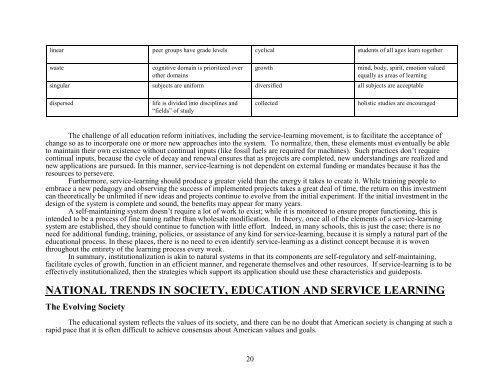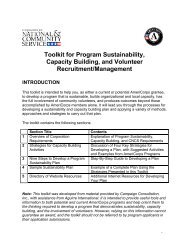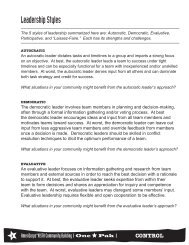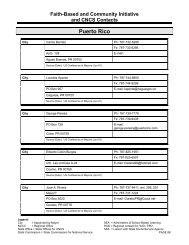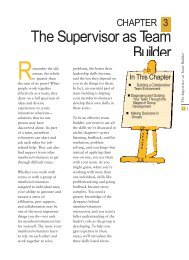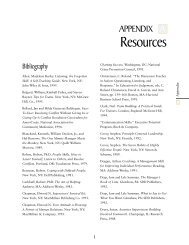MAKE IT LAST FOREVER: THE ... - National Service Resource Center
MAKE IT LAST FOREVER: THE ... - National Service Resource Center
MAKE IT LAST FOREVER: THE ... - National Service Resource Center
You also want an ePaper? Increase the reach of your titles
YUMPU automatically turns print PDFs into web optimized ePapers that Google loves.
linear peer groups have grade levels cyclical students of all ages learn together<br />
waste cognitive domain is prioritized over<br />
other domains<br />
growth mind, body, spirit, emotion valued<br />
equally as areas of learning<br />
singular subjects are uniform diversified all subjects are acceptable<br />
dispersed life is divided into disciplines and<br />
“fields” of study<br />
collected holistic studies are encouraged<br />
The challenge of all education reform initiatives, including the service-learning movement, is to facilitate the acceptance of<br />
change so as to incorporate one or more new approaches into the system. To normalize, then, these elements must eventually be able<br />
to maintain their own existence without continual inputs (like fossil fuels are required for machines). Such practices don’t require<br />
continual inputs, because the cycle of decay and renewal ensures that as projects are completed, new understandings are realized and<br />
new applications are pursued. In this manner, service-learning is not dependent on external funding or mandates because it has the<br />
resources to persevere.<br />
Furthermore, service-learning should produce a greater yield than the energy it takes to create it. While training people to<br />
embrace a new pedagogy and observing the success of implemented projects takes a great deal of time, the return on this investment<br />
can theoretically be unlimited if new ideas and projects continue to evolve from the initial experiment. If the initial investment in the<br />
design of the system is complete and sound, the benefits may appear for many years.<br />
A self-maintaining system doesn’t require a lot of work to exist; while it is monitored to ensure proper functioning, this is<br />
intended to be a process of fine tuning rather than wholesale modification. In theory, once all of the elements of a service-learning<br />
system are established, they should continue to function with little effort. Indeed, in many schools, this is just the case; there is no<br />
need for additional funding, training, policies, or assistance of any kind for service-learning, because it is simply a natural part of the<br />
educational process. In these places, there is no need to even identify service-learning as a distinct concept because it is woven<br />
throughout the entirety of the learning process every week.<br />
In summary, institutionalization is akin to natural systems in that its components are self-regulatory and self-maintaining,<br />
facilitate cycles of growth, function in an efficient manner, and regenerate themselves and other resources. If service-learning is to be<br />
effectively institutionalized, then the strategies which support its application should use these characteristics and guideposts.<br />
NATIONAL TRENDS IN SOCIETY, EDUCATION AND SERVICE LEARNING<br />
The Evolving Society<br />
The educational system reflects the values of its society, and there can be no doubt that American society is changing at such a<br />
rapid pace that it is often difficult to achieve consensus about American values and goals.<br />
20


